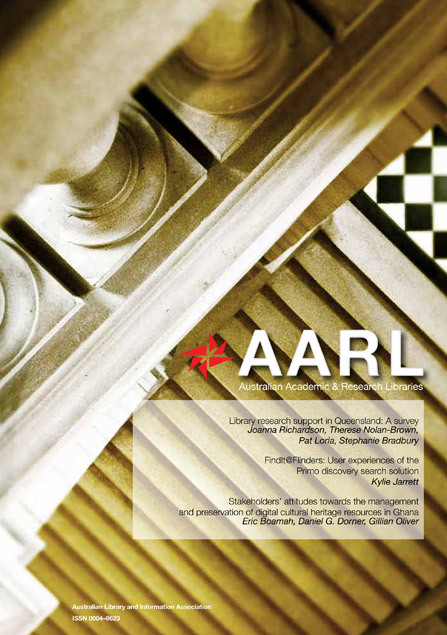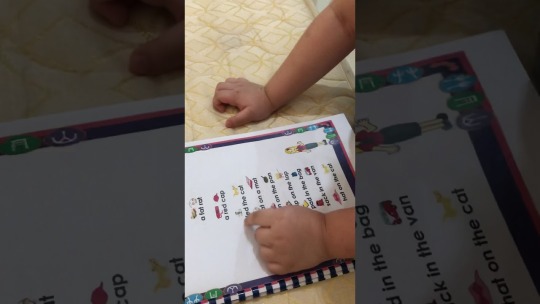Text
Literacy Libraryguided Reading 101

Literacy Libraryguided Reading 101 5th
Reading Literacy Worksheets
Literacy Libraryguided Reading 101 Lesson
What every teacher should know
Feb 6, 2018 - Explore Lauren McGlone's board 'Literacy - Library', followed by 361 people on Pinterest. See more ideas about classroom library, reading classroom, classroom organization.
Reading 101: A Guide to Teaching Reading and Writing
Literacy Centers 101: Pocket Chart Center Day 3 of my summer vacation and what am I doing??? Well, I did have a wonderful time today at Centre Island with my husband, kiddies and dear friends of ours.
Emergent Literacy Reading 63 IV. Emergent Literacy Writing 79 V. Mathematics 87 VI. Science 101 VII. Social Studies 107 VIII. Fine Arts 113 IX. Physical Development 117 X. Technology 122 Appendices 124.
The Certification Exam for Educators of Reading Instruction (CEERI) Teachers who complete the Reading 101 modules will learn about critical skills for proficient reading and best practices that support students’ acquisition of these skills.
In this book we have an English 101 class explaining what “literacy” means to them and the way this word has gained meaning as they have grown older and gone through many experiences. The personal stories that are shared within these pages reflect where reading and writing started for each student and the way that their literacy journey.
Reading 101 is a collaboration with the Center for Effective Reading Instruction and The International Dyslexia Association.
Learn the definitions of phonological awareness and phonemic awareness — and how these pre-reading listening skills relate to phonics.

Phonological awareness and phonemic awareness: what's the difference?
Phonological awareness refers to a global awareness of the sound structures of speech and the ability to manipulate those structures. Phonological awareness is an umbrella term that encompasses both basic levels of awareness of speech sounds, such as rhyming, alliteration, the number of words in a sentence, and the syllables within words, as well as more advanced levels of awareness such as onset-rime awareness and full phonemic awareness.
Phonemic awareness is the most advanced level of phonological awareness. It refers to a child’s awareness of the individual phonemes — the smallest units of sound — in spoken words, and the ability to manipulate those sounds.
Phonological awareness (PA) involves a continuum of skills that develop over time and that are crucial for reading and spelling success, because they are central to learning to decode and spell printed words. Phonological awareness is especially important at the earliest stages of reading development — in pre-school, kindergarten, and first grade for typical readers.
Explicit teaching of phonological awareness in these early years can eliminate future reading problems for many students. However, struggling decoders of any age can work on phonological awareness, especially if they evidence problems in blending or segmenting phonemes.
How about phonological awareness and phonics?
Phonological awareness refers to a global awareness of sounds in spoken words, as well as the ability to manipulate those sounds.
Phonics refers to knowledge of letter sounds and the ability to apply that knowledge in decoding unfamiliar printed words.
So, phonological awareness refers to oral language and phonics refers to print. Both of these skills are very important and tend to interact in reading development, but they are distinct skills; children can have weaknesses in one of them but not the other.

For example, a child who knows letter sounds but cannot blend the sounds to form the whole word has a phonological awareness (specifically, a phonemic awareness) problem. Conversely, a child who can orally blend sounds with ease but mixes up vowel letter sounds, reading pit for pet and set for sit, has a phonics problem.
Dr. Louisa Moats explains to a kindergarten teacher why it is critical to differentiate between the letters and sounds within a word when teaching children to read and write.


Reading 101 is a collaboration with the Center for Effective Reading Instruction and The International Dyslexia Association.
What are the key critical reading skills, and how do we use them to comprehend? And why does background knowledge matter?
This section presents my latest thinking on comprehension with The Comprehension Process Staircase as a visual aid.
(Illustration by Sandy Gingras, whose Website is here.)
Literacy Libraryguided Reading 101 5th
Here's an important essay on why background knowledge matters: 'There's No Such Thing as a Reading Test' in The American Prospect by E.D. Hirsch and Robert Pondiscio (June 13, 2010)
Here are two video training modules that explain key topics on this page:

Comprehension Process MODULE:
This 23-min SELF-PACED video explains The Comprehension Process Staircase and how to use the Quadrant Analysis Approach to images (reinforcing the comprehension process with visual analysis).
For more resources to support your work around comprehension, please check out the following:
TLC Website “Comprehension 101” page--lots of tools to download! And you can show students the Comprehension Process Staircase!
TLC Blog post on Quadrant Analysis--a detailed explanation of how to teach the Quadrant Analysis approach (which is also explained in the video)
Here's the FREE link to the Comprehension Process Module PowerPoint.
***
This 20-min SELF-PACED video explains the four key critical reading skills (paraphrasing, inference, vocabulary in context, and summarizing/inferring main idea) and how to teach them. NOTE: Watch The Comprehension Process MODULE before this one.
For more resources to support your work around key critical reading skills, please check out the following:
TLC Website “Comprehension 101” page--lots of tools to download!
TLC Website 'Analyzing Literature' page--ditto!
Here's the FREE link to the 4 Key Critical Reading Skills Module PowerPoint.
***
Here are the 4 key critical reading skills:
SKILLWHAT IT LOOKS LIKE AND WHAT IT ENTAILSTESTING CODE WORDS
PARAPHRASING
(AKA Literal Comprehension)
“The man fell down.”-> “He collapsed.”
Paraphrasing means “translating literally” or “putting something in your own words.” This requires you to:
Unpack vocabulary (attack roots; use prior knowledge and context clues).
Unpack syntax and grammar (unpack clauses and phrases; pay attention to punctuation).
Draw inferences from idioms.
NEW: For a useful strategy, seeHow to Paraphrase-3rd grade Practice, How to Paraphrase-MS Practice, How to Paraphrase-HS Practice. For tips on how to create critical reading questions, see How to Create Critical Reading Questions: A Recipe.
See also Rewordify.com, a powerful, free, online software that intelligently simplifies difficult English, for faster comprehension (IN OTHER WORDS, it paraphrases for you).
Facts
In other words
According to the story/passage
What does this mean?
Plot-related
Paraphrase
INFERENCE
(AKA Extended Reasoning)
“The man fell down.”-> “He must have been sick.”
Inference entails drawing a conclusion, making a prediction/guess, or figuring something out. To do this, you need facts/information, and you need to ask questions about the given information. See the comprehension process described below for more explanation.
NEW:Paraphrasing and Inference Organizer AND Quotations to Paraphrasing and Inference in the Download Zone will help students practice these skills. Also check out Character Traits: Quote and Explain and Question-Inference-Evidence & Explanation ORGANIZER, Question-Inference-Evidence & Explanation ORGANIZER MODEL, and Question-Inference-Evidence & Explanation ORGANIZER MODEL LESSON PLAN
Here's a fun way to invite students to apply their inference skills: Read 'The Conversation Piece' by Ned Guymon (which originally appeared in Ellery Queen's Mystery Magazine in 1950) and figure out what is going on in this dialogue.
Infer
Suggest
Conclude
Because/why
Most likely
Probably
VOCABULARY IN CONTEXT“They’re not interested in being diverted from their direction with alternative routes.” The word “diverted” in this context means
A) amused
B) less experienced
C) taking the same route
D) sent in a different direction
Vocabulary in context requires you to infer meaning of words using the context and your prior knowledge.
What does ____ mean in this context?
Based on the passage, what does ____ mean?
NOTE: At least one distractor will use an alternative meaning of the word in question. In this example, “A” is the distractor.
FINDING MAIN IDEA/ARGUMENT
(AKA Summarizing)
The main idea of this passage is
The yearly festival in Pamplona, Spain, always includes the Running of the Bulls.
Running alongside the bulls as they are moved from the corral to the bullring in Pamplona, Spain, has become an exciting and dangerous sport.
The bravest runners carry newspapers with which they touch the bulls as they run through the streets.
The Running of the Bulls in Pamplona, Spain, has been going on for about three hundred years.
Finding the main idea/argument, AKA summarizing, requires you to infer the key message(s) from the text. Your ability to do this is based on how well you are able to paraphrase, infer, and determine vocabulary meaning from context. Also, you have to understand the difference between ARGUMENT and EVIDENCE. See the comprehension process described below for details.
After reading the article/passage/story…
The central idea
The theme
This passage is mostly about
The author would probably agree
The best summary
How do we use these skills to comprehend? See below. Start at the bottom.
INFERENCE(S) -> EXPLANATION
Draw new inferences and generate more explanations. These join your prior knowledge/skills.
???
+
PRIOR KNOWLEDGE/
SKILLS
Ask more questions…
MORE “TEXT”
+
Paraphrase, etc. This “text” may confirm or challenge your prior knowledge/previous inferences.
FOR EXAMPLE: If the next sentence says, 'He had had a fever all day,' your prior inference is confirmed. If, however, the next sentence is 'He should've bought the shoes with velcro straps,' you would correct your incorrect prior assumption/inference.
INFERENCE(S)
-> EXPLANATION
Draw inferences in response to your questions, and support them with explanations. These infererences and explanations join your prior knowledge/skills.
FOR EXAMPLE: Given no additional information about the man who collapsed (no mention of shoelaces or attackers) and knowing that healthy people are generally able to stand up without falling down, you might infer that he fell down BECAUSE HE WAS SICK. NOTE: You will continue to think this until new information challenges your thinking.
???
+
PRIOR
KNOWLEDGE/
SKILLS
Ask questions based on paraphrasing/translation and your prior knowledge/skills.
FOR EXAMPLE: Given the case of the falling man, you might ask, 'WHY did he collapse?' You might recall prior instances of seeing people tripping over shoelaces, fainting, or being knocked down.
YOU APPLY IT/
THEM TO
“TEXT.”
^
^
PARAPHRASE: Put the “text” in your own words. NOTE: “Text” could be almost anything: words, pictures, or a situation (e.g., reading the defense on a basketball court).
Unpack vocabulary.
Unpack grammar/syntax.
INFER from idioms.
FOR EXAMPLE: Given the text 'The man fell down,' you could paraphrase this as 'He collapsed.' For a useful strategy, see How to Paraphrase-3rd grade Practice,How to Paraphrase-MS Practice, How to Paraphrase-HS Practice in the Download Zone.
YOU HAVE
PRIOR KNOWLEDGE/
SKILLS.
^
^
Start here.
You approach the 'text' with your prior knowledge, which includes:
Previous experiences
Context
Texts read/academic content knowledge
Knowledge of conventions (genre, grammar, syntax)
NOTE: If your 'prior knowledge' is incorrect, it will affect your ability to process the 'text.'
FOR EXAMPLE: If you believe that 5 times 5 is 30, then when faced with a math word problem requiring the multiplication of 5 x 5, you will not solve the problem correctly.
Reading Literacy Worksheets
For more information on strategies for teaching the 4 key critical reading skills, see Reading Comprehension Strategies Overviewin the Download Zone. For a 'Sample LESSON PLAN to LABEL CRITICAL READING QUESTIONS,' see MS English Lessons & Units. Want to review the FOUR CRITICAL READING SKILLS (paraphrasing, inference, vocabulary in context, and summarizing/inferring main idea) and teach your students how to identify test questions that deal with these skills? Check out this Sample LESSON PLAN TO LABEL CRITICAL READING QUESTIONS and HANDOUTS for the lesson. Also, see READING Home Page for other helpful subsections.
Sometimes, to demonstrate comprehension, we want students to explain quotations. Check out the Explanatory Quote Response Organizer and Explanatory Quote Response Organizer MODEL.
For additional excellent resources on reading instruction (esp. nonfiction text support), even if your state doesn't use PARCC assessments, check out the PARCC Prep page.
Literacy Libraryguided Reading 101 Lesson
IN THE DOWNLOAD ZONE for Comprehension 101:

1 note
·
View note